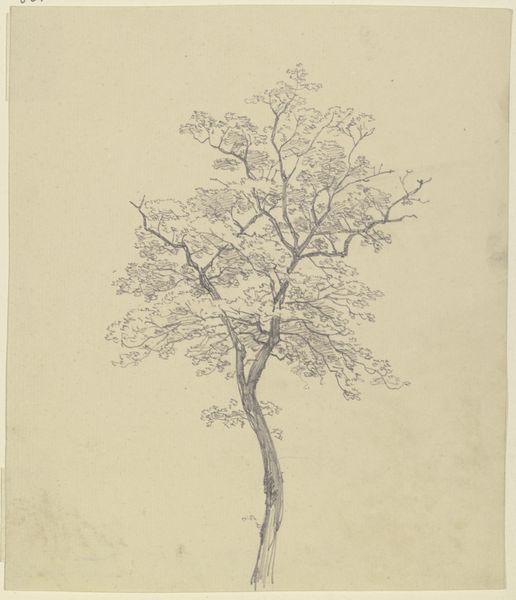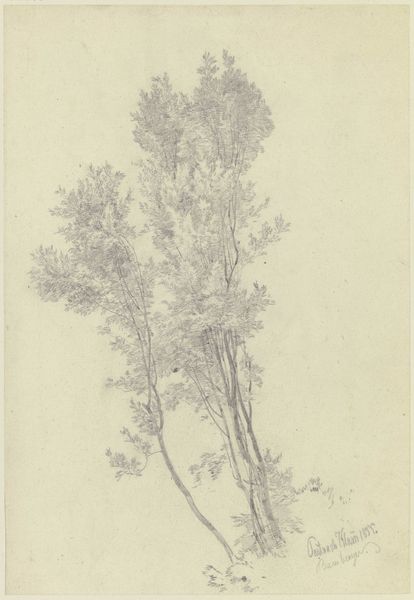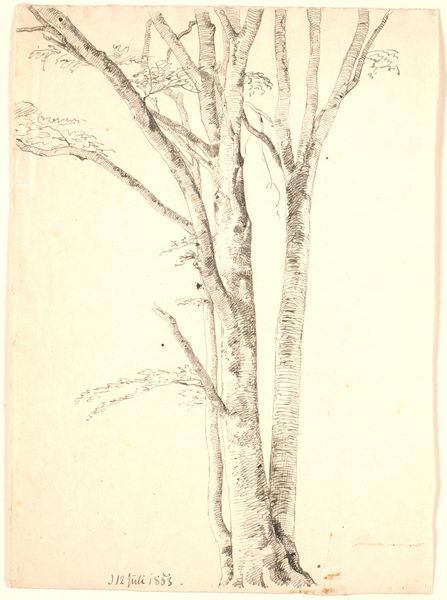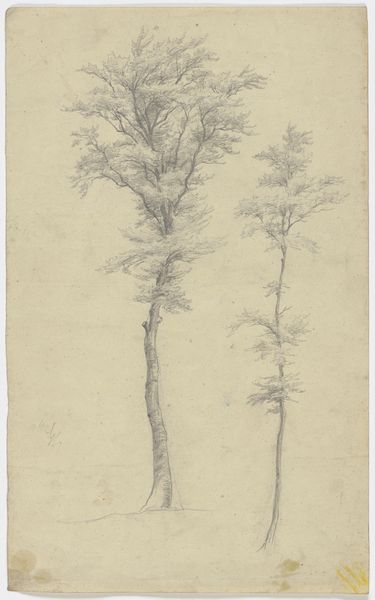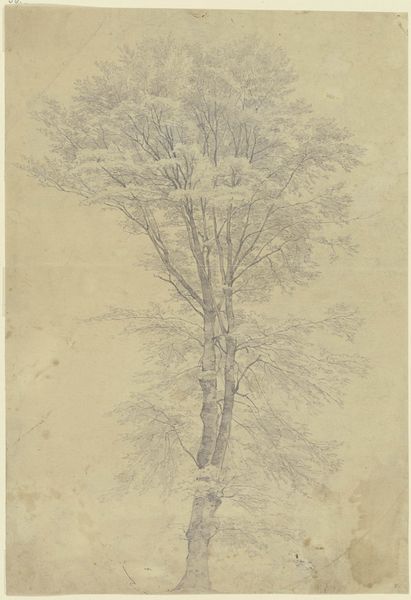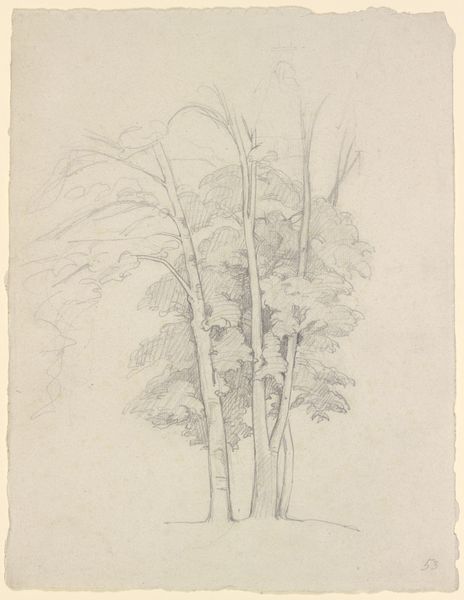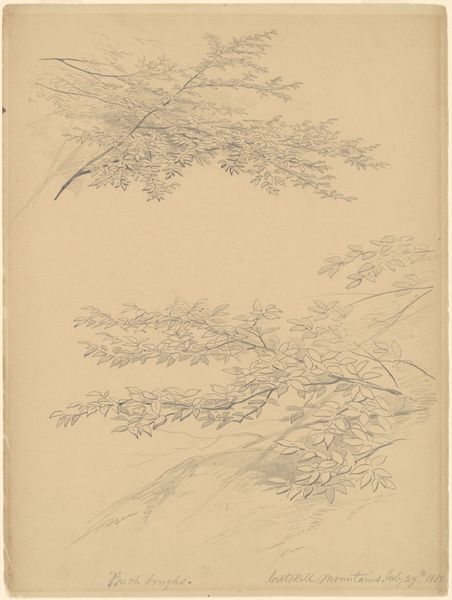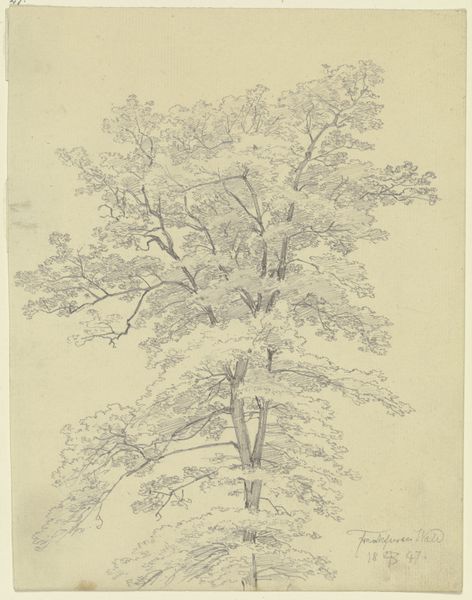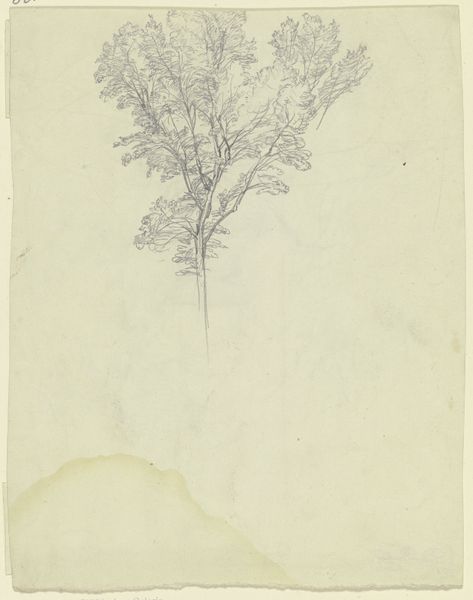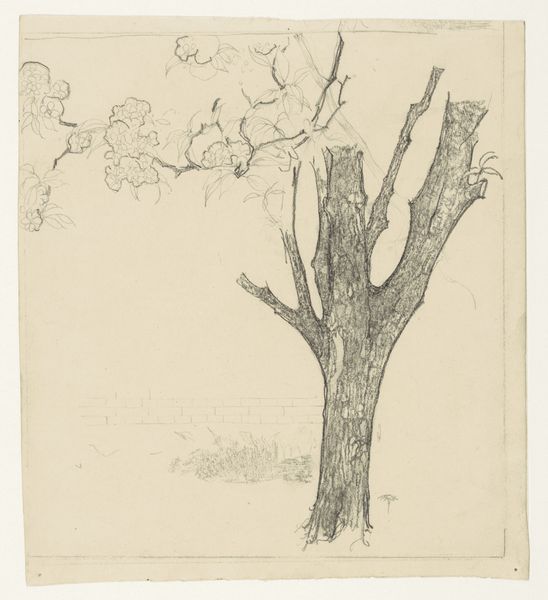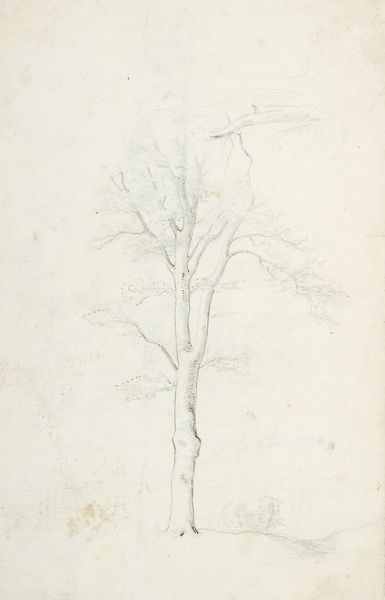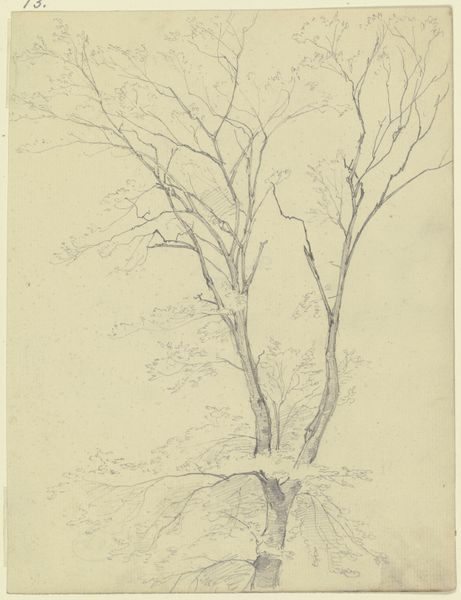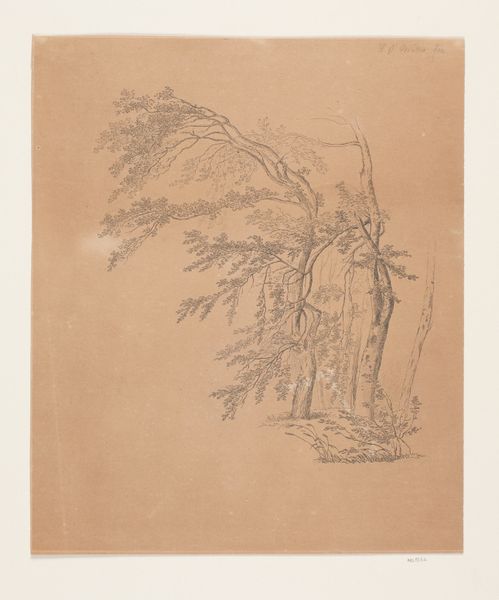
drawing, watercolor
#
drawing
#
landscape
#
etching
#
watercolor
#
pencil work
#
watercolour illustration
#
watercolor
#
realism
Dimensions: 200 mm (height) x 269 mm (width) (bladmaal)
Curator: This drawing, "Studie af ungt bøgetræ med kun lidt løv," or "Study of a young beech tree with few leaves," by P.C. Skovgaard, dates back to 1854. The medium is primarily watercolor and pencil on paper. What's your immediate reaction? Editor: A sense of starkness. It feels almost ghostly, the way the tree rises from the blank page. I'm struck by its vulnerability. Curator: Interesting. The beech tree, especially in Danish culture, often symbolizes growth and resilience. Do you find those ideas present? Editor: Not initially. The "few leaves" of the title become really central here. This isn’t a tree in its full, protective strength. It's exposed. Knowing that Skovgaard was deeply engaged in representing the Danish landscape in a period of rising national consciousness, I can't help but read this as a depiction of a nation in its formative years, fragile yet reaching. Curator: That's a powerful reading. I also wonder about the drawing's simplicity. Skovgaard’s realism usually involves incredibly lush detail, and yet here, there's such reduction. It seems to highlight the very essence of the tree form. Beech trees were of great important and even deemed as holy. In older times you asked for advice from wise men, but you could also seek advice at holy trees and springs. Editor: Absolutely. And think about the use of watercolor itself—so transparent, so dependent on the ground beneath. It suggests a tentative relationship with the earth, mirroring the tree's delicate state. The image has something to say about precarity in relation to both nature and culture. What elements of symbolic importance did you focus on when viewing it? Curator: Well, considering Skovgaard's broader body of work and the context of Danish Golden Age painting, the symbolism felt less overtly political, more focused on the spiritual connection between humans and the land. I'm very interested in Skovgaard's focus on capturing the essence of this sacred being and translating that into something a human could grasp. Editor: It seems to capture a transient moment. Almost as though we have caught the tree mid growth as it transforms. Thanks to Skovgaard, its legacy endures.
Comments
No comments
Be the first to comment and join the conversation on the ultimate creative platform.
